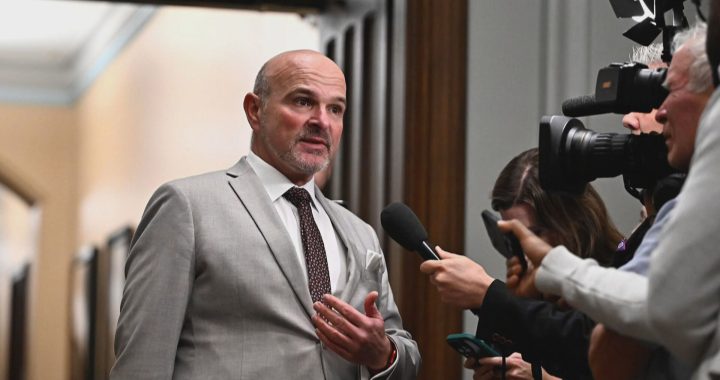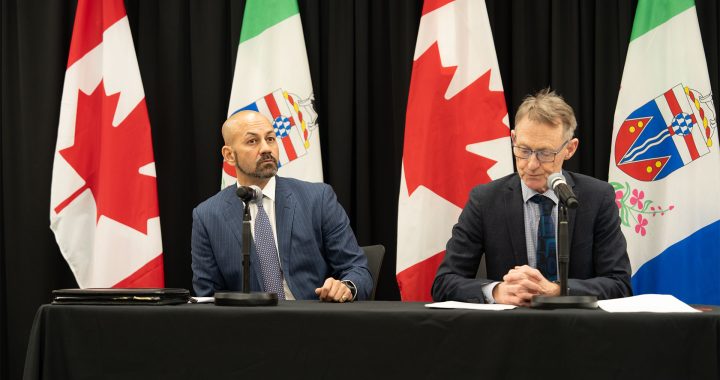Chris Stewart
APTN News
In Alberta, there are too many children in the child welfare system and too many who are trying to take their own lives says the provinces child and youth advocate.
“One of the things we are quite concerned about with Indigenous young people is the number of people in care of the government,” said Del Graff. “They are vastly over-represented in Alberta.
“We’ve addressed that through a number of reports and we are pushing the government to develop a plan in concert with Indigenous leadership and communities to try to change that tide.”
Graff just released his 2016-17 annual report.
According to the reports, 69 per cent of the young people in the care of the province are Indigenous.
Last year his office made 12 recommendations to the Alberta government to reduce the number of Indigenous youth attempting suicide.
In Alberta, Indigenous young people are six times more likely to die by suicide.
One key recommendation is to work with First Nation communities to develop their own youth support system.
“Certainly a mechanism to enable Indigenous communities, in particular, to be able to attend to the needs of their youth members,” he said. “Through some type of suicide prevention plan – one that’s in the community, built by the community.”
Graff said the provincial government is moving slowly toward implementing his recommendations.
“From my point of view, they are not doing enough fast enough – but the fact that they are taking some action,” he said. “They are putting a framework together. They are trying to address those needs in Indigenous communities, it is an important development. It’s one we are quite pleased about.”
Graff said his office worked with the Alberta government on the Child Protection and Accountability Act which may become a law next year.
The law will allow the Advocate’s office the ability to review every death under 20 years old who were part of the child welfare system
The hope is that the number of children being taken into care, and the attempted suicides will drop.
“My office worked very hard to try to make it so that we can reduce the likelihood of trauma for young people that can lead to circumstances like them dying by suicide,” he said.










Removing children from their parents adds to the grief and post traumatic stress of already burdened parents, and most often passes to another generation the pain of disconnection from birth family and culture and even the potential for institutionalized and personal abuse.
I know this after beginning my career as a preschool educator in a treatment centre for emotionally disturbed children and then spending more than thirty years as a community college psychology professor, hearing the stories of thousands of students, many of them Aboriginal Canadians.
I also know that when my mother was diagnosed with ALS, having children aged 2, 5, 9 and 10. She survived 5 years longer than predicted, because my father insisted that we would find a way to treat her at home, because her purpose was to mother and she couldn’t do that from a nursing home, nor could she muster the will to live ‘from away.
At the same time we kids learned to nurture each other and our parents, we learned to cook, raise the younger ones and nurse. With the support of a nurse who watched over our mother when we were in school, a preschool that accepted our youngest sister a few days a week andembers of our church and community who offered support in countless ways. Now we for are retiring from careers in medicine and education. If we had been ‘removed from the home’ dispersed to various foster care situations I shudder to think of the resulting trauma. But we were white, upper middle class, well connected and insured beyond OHIP.
Why are we not supporting Aboriginal parents and children in their communities as well as my family was supported?
Even the most disturbed parents would benefit from involvement in the care of their children, perhaps in a kubutz like setting. Didn’t most Aboriginal Canadians raise their children in extended families and villages? Can we not support that again?
But I believe that few children are removed because their parents are abusive. Those who are described as negelectful, I would argue are simply overwhelmed by poverty, inequality, isolation, post traumatic stress and complex pervasive grief, hopelessness, despair and depression – much of which is sociologically caused.
For parents who are not life threatening towards their children (and I dare say these are the majority) the option of living in a nuclear family home should be made viable with basic heathcare, shelter, nutrition (and water!) and income support, career counselling and workplace legislation to increase equality, support for post traumatic stress, grief, marriage and family counselling, addiction counselling, and other psychological issues -ideally offered by or within peer groups in Native run community centres, rather than in white run ‘treatment centres.’
This is entirely do-able and more cost effective than paying foster parents and institutions to do the work of child rearing that the vast majority of parents and children would prefer to have done within their familie, extended families or communities.
Failing that I’d like to see more volunteer (or paid) extra grandparents who would take on the support of a mother (and hopefully father) and children. Perhaps in a subdivided house or down the hall in an apartment building or visiting regularly in a shared neighbourhood… I’ve given this kind of support to neighbours and family members. I know many retired teachers, social workers, nurses, and others (preferably Aboriginal but not necessarily) who might be recruited for such a role, especially while parents are in post secondary education, are adjusting to city life (if chosen) or undergoing medical treatment…
I already have three families and five children in my inner circle. But I could run groups for parents, and volunteer grandparents to help define positive, non patronizing support. I could offer individual counselling for a very limited number of people, I could address decision making groups and funding bodies, and I could occasionally offer my guest room for emergency shelter.
The fact that native children are STILL so disproportionally removed from families, is a national shame and it must stop now.
Removing children from their parents adds to the grief and post traumatic stress of already burdened parents, and most often passes to another generation the pain of disconnection from birth family and culture and even the potential for institutionalized and personal abuse.
I know this after beginning my career as a preschool educator in a treatment centre for emotionally disturbed children and then spending more than thirty years as a community college psychology professor, hearing the stories of thousands of students, many of them Aboriginal Canadians.
I also know that when my mother was diagnosed with ALS, having children aged 2, 5, 9 and 10. She survived 5 years longer than predicted, because my father insisted that we would find a way to treat her at home, because her purpose was to mother and she couldn’t do that from a nursing home, nor could she muster the will to live ‘from away.
At the same time we kids learned to nurture each other and our parents, we learned to cook, raise the younger ones and nurse. With the support of a nurse who watched over our mother when we were in school, a preschool that accepted our youngest sister a few days a week andembers of our church and community who offered support in countless ways. Now we for are retiring from careers in medicine and education. If we had been ‘removed from the home’ dispersed to various foster care situations I shudder to think of the resulting trauma. But we were white, upper middle class, well connected and insured beyond OHIP.
Why are we not supporting Aboriginal parents and children in their communities as well as my family was supported?
Even the most disturbed parents would benefit from involvement in the care of their children, perhaps in a kubutz like setting. Didn’t most Aboriginal Canadians raise their children in extended families and villages? Can we not support that again?
But I believe that few children are removed because their parents are abusive. Those who are described as negelectful, I would argue are simply overwhelmed by poverty, inequality, isolation, post traumatic stress and complex pervasive grief, hopelessness, despair and depression – much of which is sociologically caused.
For parents who are not life threatening towards their children (and I dare say these are the majority) the option of living in a nuclear family home should be made viable with basic heathcare, shelter, nutrition (and water!) and income support, career counselling and workplace legislation to increase equality, support for post traumatic stress, grief, marriage and family counselling, addiction counselling, and other psychological issues -ideally offered by or within peer groups in Native run community centres, rather than in white run ‘treatment centres.’
This is entirely do-able and more cost effective than paying foster parents and institutions to do the work of child rearing that the vast majority of parents and children would prefer to have done within their familie, extended families or communities.
Failing that I’d like to see more volunteer (or paid) extra grandparents who would take on the support of a mother (and hopefully father) and children. Perhaps in a subdivided house or down the hall in an apartment building or visiting regularly in a shared neighbourhood… I’ve given this kind of support to neighbours and family members. I know many retired teachers, social workers, nurses, and others (preferably Aboriginal but not necessarily) who might be recruited for such a role, especially while parents are in post secondary education, are adjusting to city life (if chosen) or undergoing medical treatment…
I already have three families and five children in my inner circle. But I could run groups for parents, and volunteer grandparents to help define positive, non patronizing support. I could offer individual counselling for a very limited number of people, I could address decision making groups and funding bodies, and I could occasionally offer my guest room for emergency shelter.
The fact that native children are STILL so disproportionally removed from families, is a national shame and it must stop now.